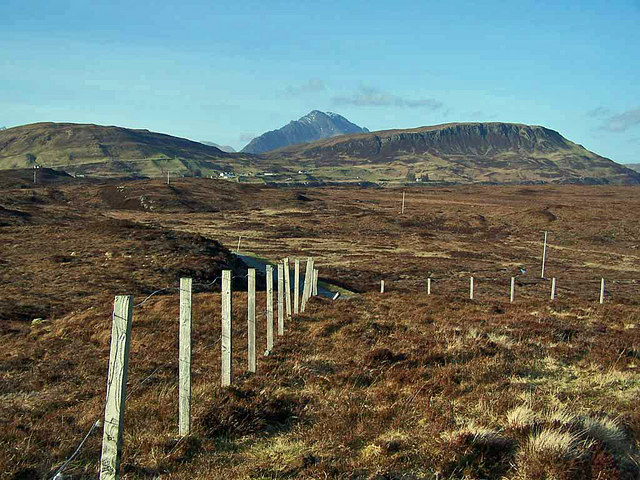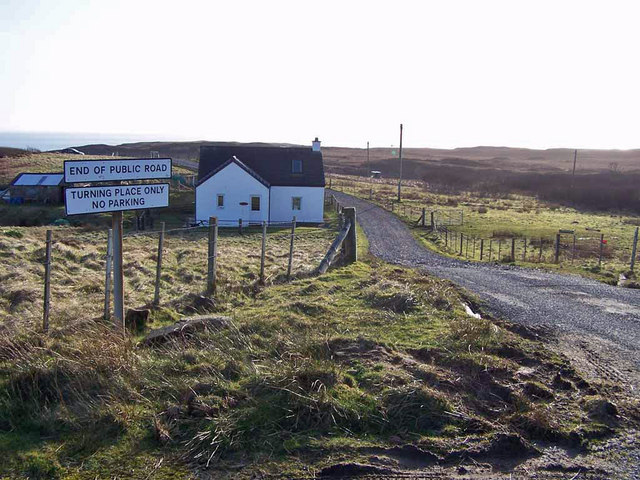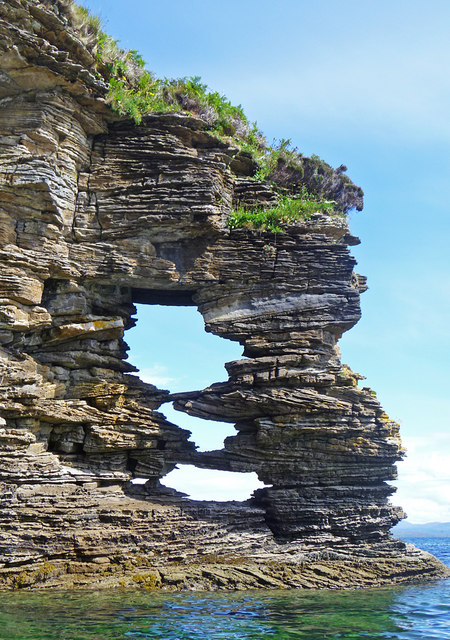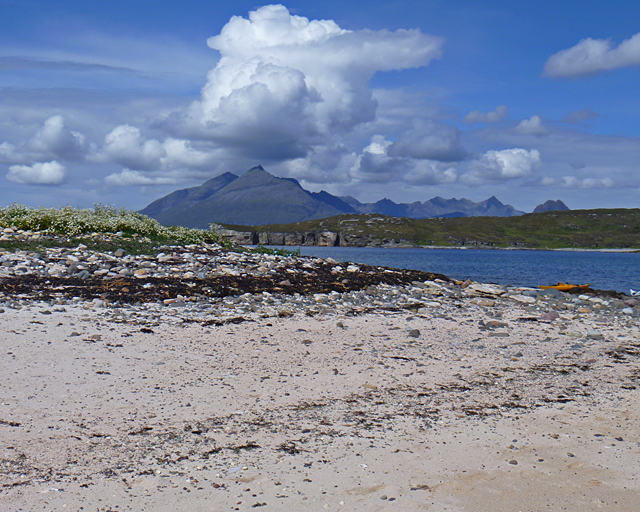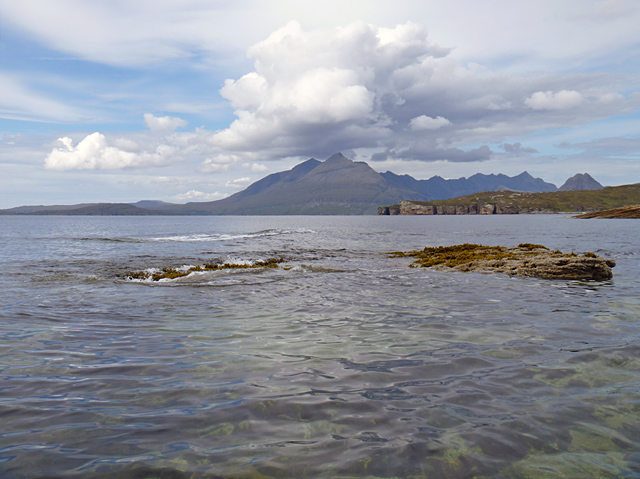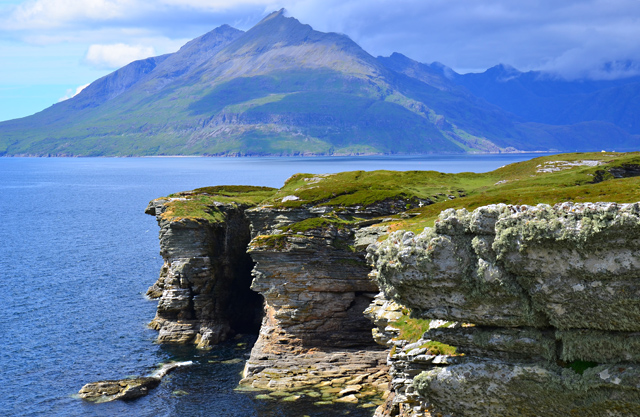Rubha na h-Easgainne
Coastal Feature, Headland, Point in Inverness-shire
Scotland
Rubha na h-Easgainne

Rubha na h-Easgainne is a stunning coastal feature located in Inverness-shire, Scotland. Situated on the west coast, it is a prominent headland that juts out into the sea, forming a point that offers breathtaking views of the surrounding landscape.
The name Rubha na h-Easgainne translates to "Headland of the Little Waterfall" in Scottish Gaelic, which is a fitting description given the presence of a small waterfall that cascades down the cliffs into the ocean below. This waterfall adds to the beauty and charm of the area, creating a picturesque scene that attracts visitors from far and wide.
The headland itself is characterized by its rugged and dramatic cliffs, which are made up of ancient rocks that have been shaped over centuries by the relentless power of the sea. The cliffs rise high above the water, providing a vantage point for visitors to admire the expansive views of the coastline and the nearby islands.
Rubha na h-Easgainne is also a haven for wildlife enthusiasts. The surrounding waters are home to a diverse range of marine life, including seals, dolphins, and various species of seabirds. Birdwatchers can spot colonies of nesting seabirds on the cliffs, such as puffins, guillemots, and razorbills.
Access to Rubha na h-Easgainne is relatively easy, with a well-maintained footpath that leads visitors to the headland. There are also designated viewing points and benches along the way, allowing for moments of rest and contemplation while taking in the breathtaking scenery.
Overall, Rubha na h-Easgainne is a captivating coastal feature that showcases the natural beauty and diversity of the Inverness-shire coastline. It offers a unique opportunity to immerse oneself in Scotland's rugged and untamed coastal landscape, making it a must-visit destination for nature lovers and outdoor enthusiasts.
If you have any feedback on the listing, please let us know in the comments section below.
Rubha na h-Easgainne Images
Images are sourced within 2km of 57.126609/-6.0836601 or Grid Reference NG5211. Thanks to Geograph Open Source API. All images are credited.
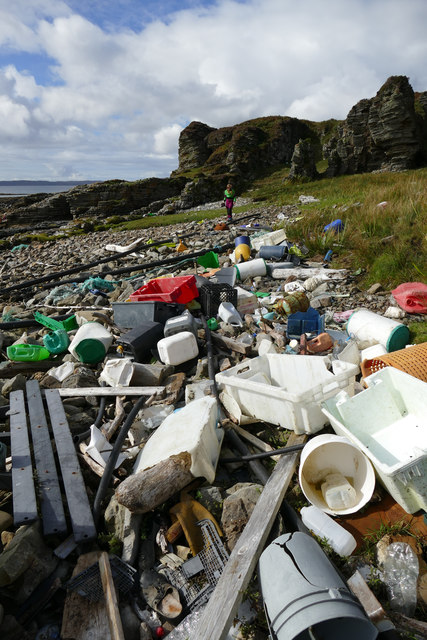


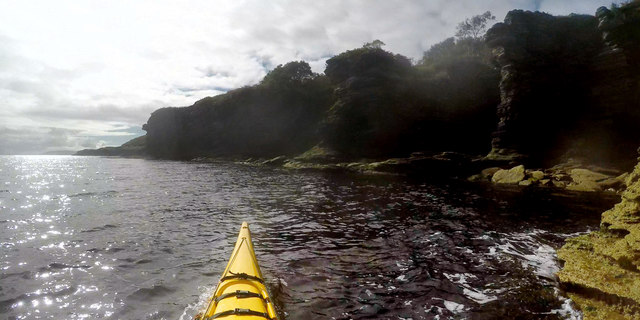
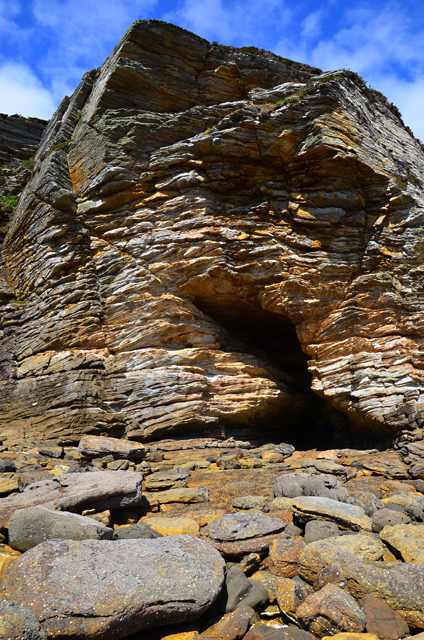
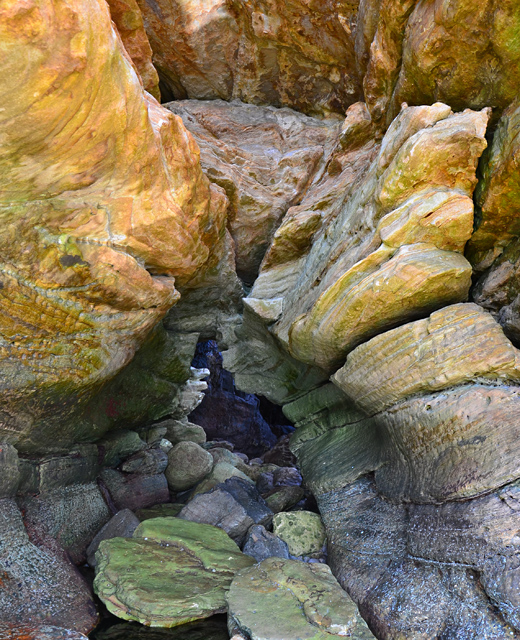
Rubha na h-Easgainne is located at Grid Ref: NG5211 (Lat: 57.126609, Lng: -6.0836601)
Unitary Authority: Highland
Police Authority: Highlands and Islands
What 3 Words
///acid.stadium.puncture. Near Elgol, Highland
Nearby Locations
Related Wikis
Strathaird
Strathaird is a peninsula on the island of Skye, Scotland, situated between Loch Slapin and Loch Scavaig on the south coast.W. H. Murray said that "Skye...
Elgol
Elgol (Scottish Gaelic: Ealaghol) is a village on the shores of Loch Scavaig towards the end of the Strathaird peninsula in the Isle of Skye, in the Scottish...
Tarskavaig
Tarskavaig (Tarsgabhaig in Scottish Gaelic) is a crofting village on the west coast of Sleat on the Isle of Skye in Scotland. It sits in a glen which meets...
Kilmarie
Kilmarie or Kilmaree (Scottish Gaelic: Cill Ma Ruibhe), (Gaelic: cill =' church or cell'; marie from St. Maolrubha) is a village in the Isle of Skye, Scotland...
Nearby Amenities
Located within 500m of 57.126609,-6.0836601Have you been to Rubha na h-Easgainne?
Leave your review of Rubha na h-Easgainne below (or comments, questions and feedback).


